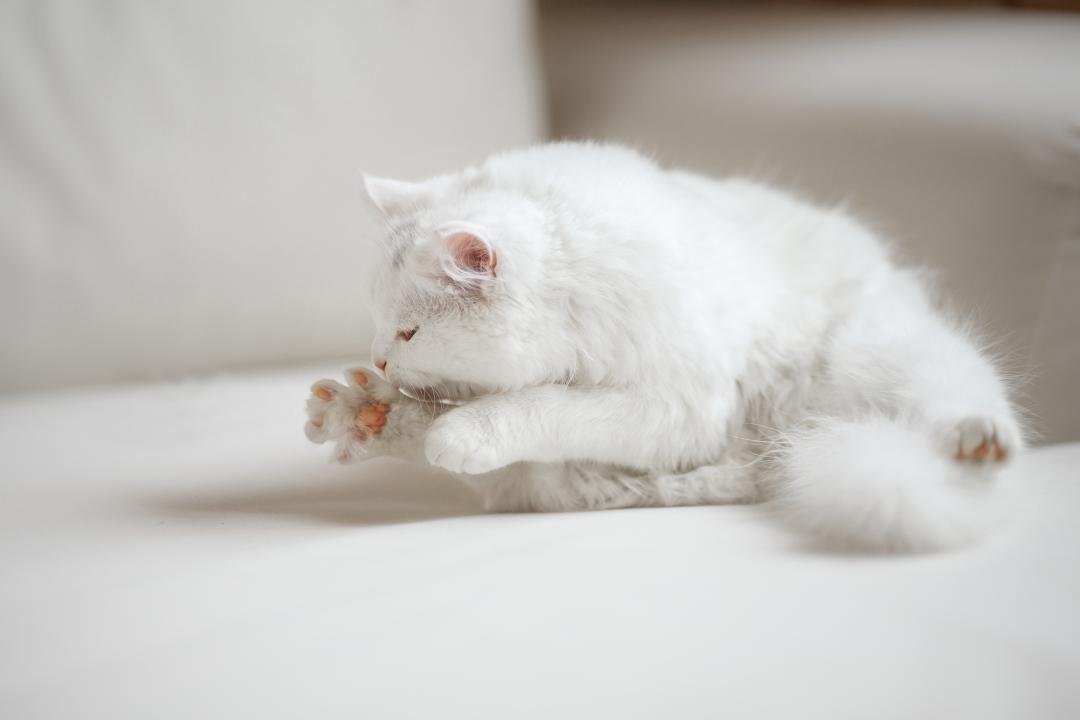

How do you know if a cat is in pain?
It can be challenging to notice when a cat is in pain because it does not easily show it. In nature, hiding pain has been beneficial for the evolution of cats, as it lowered the risk of becoming prey. However, feeling pain is an important warning signal for a cat's body, urging the cat to be cautious and protect painful areas. Cats also learn to avoid situations in which they have experienced pain in the past.
Untreated pain can cause a cat stress, unnecessary suffering, and anxiety, declining its general health and potentially leading to behavioural issues. Pain also slows down tissue healing. Without appropriate treatment, a cat's pain can become chronic, turning into long-term pain that significantly lowers the cat's quality of life.
Read this article to recognize when a cat is in pain and how to treat it.
Urinary tract infection in cats as well as other urinary tract problems are some of the most common reasons for taking a cat to the vet. Read about urinary tract infection in cats and how to prevent a cat’s urinary tract problems.
How to recognize when a cat is in pain?
Expressions of pain: When a cat is in pain, its ears may tilt sideways, its eyes might be partially or fully closed, its muzzle tenses, and its whiskers straighten. The clearer these expressions, the more pain the cat is likely experiencing.
A healthy cat has bright and round open eyes, upright ears, and a relaxed muzzle. Its whiskers are relaxed and curve downward.
Behavioural changes: When a cat is in pain, its behaviour may change. For example, changes in eating and drinking habits, especially weight loss and loss in appetite, are typical signs of pain. Read about improving your cat's appetite and how to feed a fussy cat.
A cat's behaviour towards its owner may change, and a previously sociable cat can even become aggressive in certain situations. When a cat is in pain, it may also seek human companionship more than usual.
Decreased activity and touch avoidance: A cat might stop playing and keep to itself, hiss, hide, and avoid being petted or picked up.
Changes in movement: If a cat moves stiffly or limps and cannot jump as high as before, osteoarthritis may be suspected.
Changes in coat care: When a cat is in pain, it may groom itself less or more than usual. In addition, pay attention to whether the cat licks its limbs or a specific body part more than usual. Often, a cat licks the area causing pain, such as the urinary opening in urinary infections or a painful limb in osteoarthritis.
It is essential to observe a cat's litter box usage, eating, drinking, and overall behaviour daily to react to any changes.
Common causes behind a cat in pain
Dental and oral issues: Especially in older cats, problems with teeth and gums can cause pain and make eating difficult. See seven diseases to monitor in older cats.
Osteoarthritis: Osteoarthritis is one of the most common causes behind chronic pain, especially in senior cats, and can occur in areas like the shoulders, hips, knees, or elbows. Do you know how nutrition can help to prevent health issues in senior cats? Read our article on how to find the best senior cat food.

Urinary tract issues: Various urinary tract problems are general reasons why a cat is in pain. Ensuring good hydration is vital in preventing cat’s urinary tract issues. See our tips on supporting a cat's daily water intake.
Constipation and digestive problems: A cat's abdominal pain may stem from constipation, hairballs, or a more severe inflammation. In these cases, the cat's stool composition often changes from normal. Learn more about common gastrointestinal problems in cats and how to feed a cat with a sensitive stomach.
Excess weight can worsen a cat's arthritis symptoms, reducing the cat's activity level, which can further complicate weight management. Read our guide on feeding and slimming down an overweight cat.
What to do when a cat is in pain?
It is essential to treat a cat's pain and identify its cause. However, you should never give pain medication to a cat without a prescription.
Once the cause of the pain has been identified, a veterinarian will assess the type of pain relief or pain medication needed. For example, anti-inflammatory drugs are used in supporting treatment for arthritis, although they do not cure it.
Giving medicine to a cat can sometimes be challenging. See our tips on how to make it easier.
When a cat is in pain, it may hide it very effectively during a veterinary visit. Thus, observing your cat at home, documenting, and assessing any behavioural changes are crucial.
